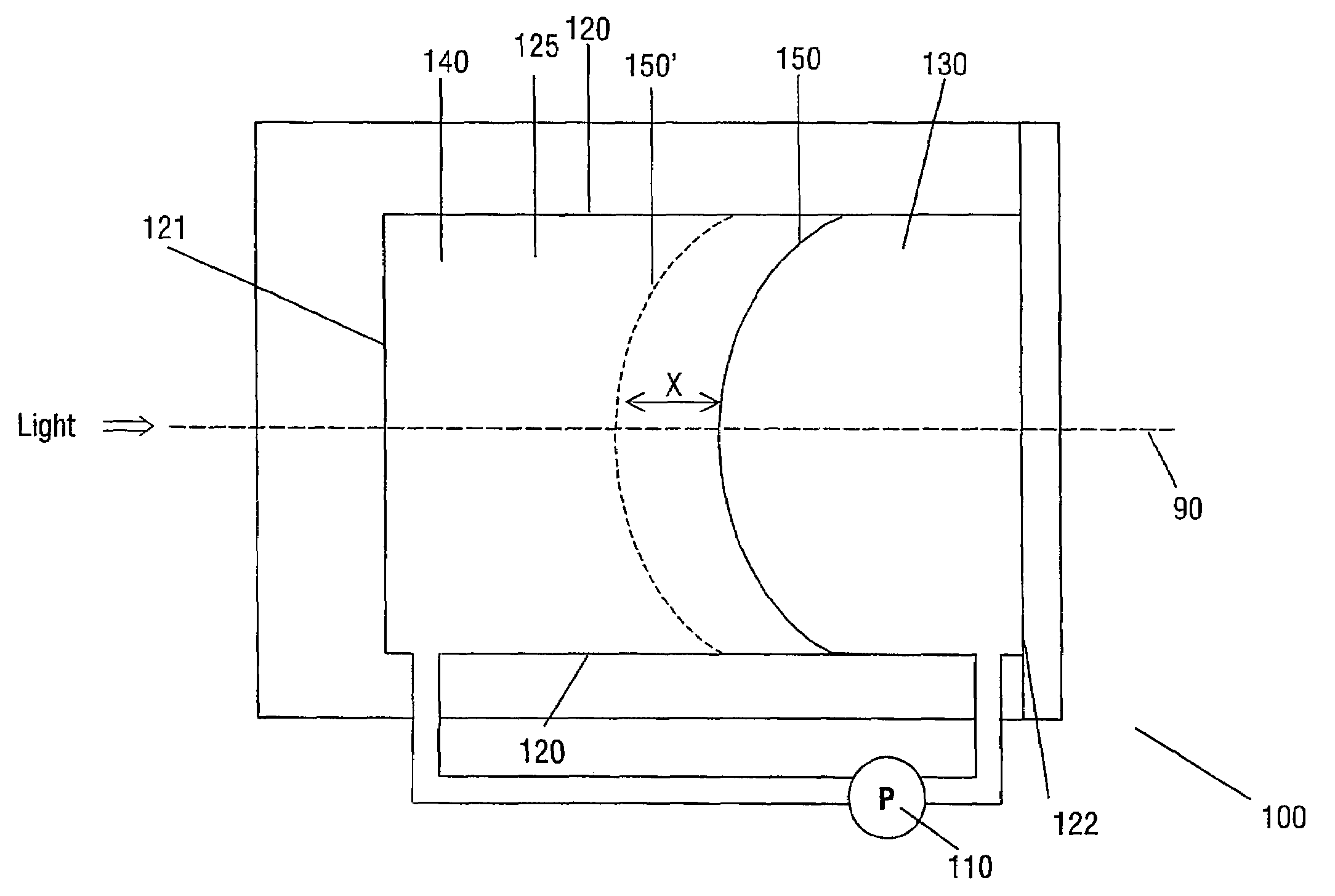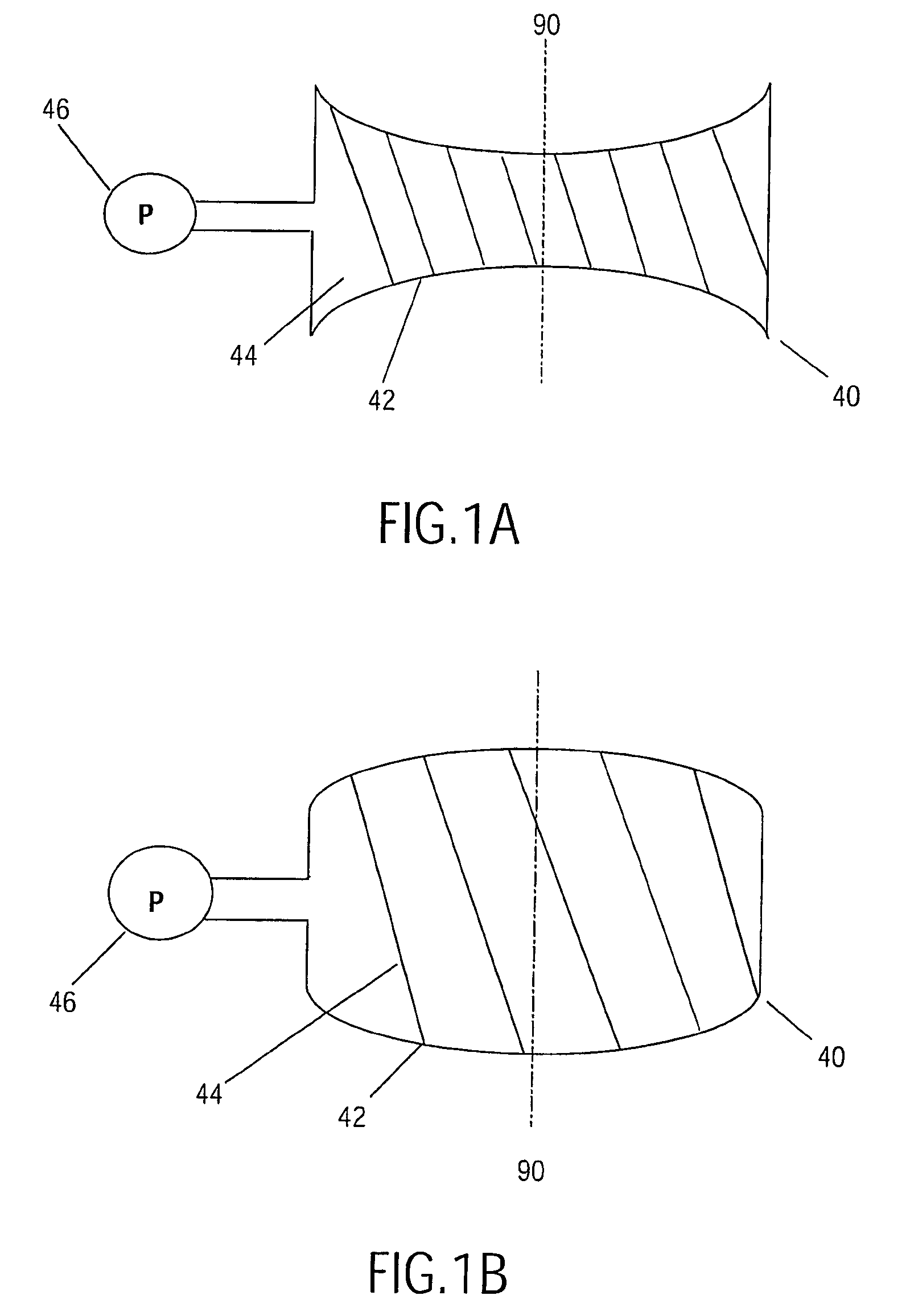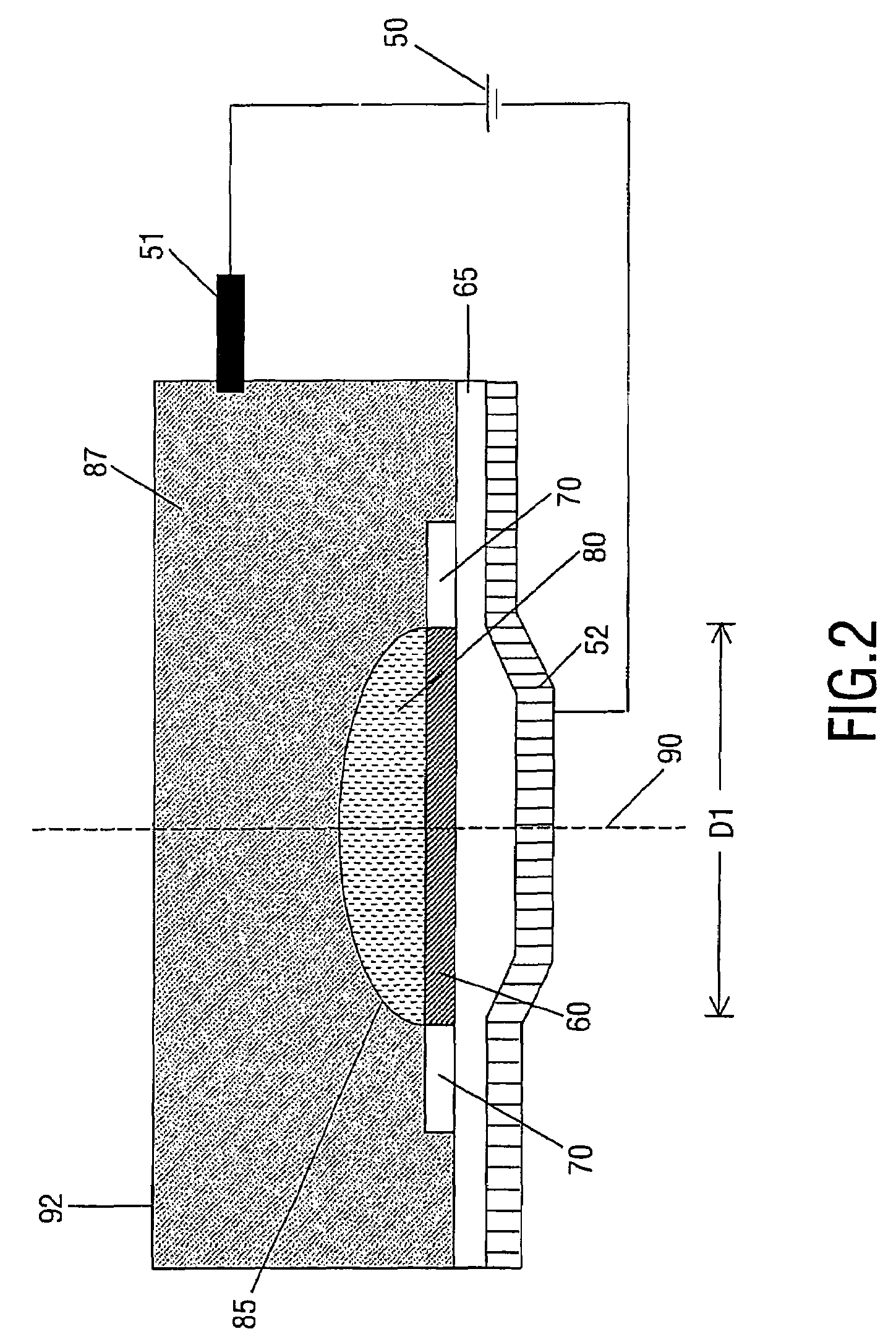Variable lens
a variable lens and lens shape technology, applied in the field of variable lenses, can solve the problems of difficult to maintain good optical properties, difficult to obtain a range of desired lens shapes, and easy mechanical fatigue, and achieve the effect of different indices of refraction
- Summary
- Abstract
- Description
- Claims
- Application Information
AI Technical Summary
Benefits of technology
Problems solved by technology
Method used
Image
Examples
first embodiment
[0031]FIG. 3A shows a variable lens in accordance with the present invention. The lens 100 can be regarded as being formed of two distinct elements: a lens function formed by the meniscus 150 between two fluids 130, 140, and a pump 110 arranged to alter the position of the lens function.
[0032]A fluid is a substance that alters its shape in response to any force, that tends to flow or to conform to the outline of its chamber, and that includes gases, vapours, liquids and mixtures of solids and liquids capable of flow.
[0033]The two fluids 130, 140 are substantially immiscible i.e. the two fluids do not mix. The two fluids 130, 140 have different refractive indices. A lens function is thus provided by the meniscus 150 formed along the contact area of the two fluids, as the fluids have different refractive indices. A lens function is the ability of the meniscus 150 to focus (converge or diverge) one or more wavelengths of the light.
[0034]The two fluids are preferably of substantially eq...
second embodiment
[0043]FIG. 4 shows a variable lens 200 in accordance with the present invention. Identical reference numerals are utilized to indicate similar features. As previously, a chamber is defined by side walls 120. The chamber contains the meniscus 150 that forms the interface between two substantially immiscible fluids 130, 140. The position of the meniscus 150 relative to the optical axis 90 is controlled by a pump.
[0044]The lens 200 essentially corresponds to a conically shaped cylinder 123 (e.g. an outer chamber) containing a concentrically placed circular cylinder 124 (e.g. an inner chamber, which has inner surfaces in the form of side walls 120). The cylinder 124 has an open connection with the rest of the liquids in the conically shaped cylinder 123. In this embodiment, the first liquid 130 is a polar or conductive liquid (e.g. water, or water with a salt added to increase its conductivity), and fluid 140 is non-conductive (e.g. silicone oil or an alkane). Annular electrode 116 is p...
PUM
| Property | Measurement | Unit |
|---|---|---|
| angle of inclination | aaaaa | aaaaa |
| angle of inclination | aaaaa | aaaaa |
| inclination angle | aaaaa | aaaaa |
Abstract
Description
Claims
Application Information
 Login to View More
Login to View More - R&D
- Intellectual Property
- Life Sciences
- Materials
- Tech Scout
- Unparalleled Data Quality
- Higher Quality Content
- 60% Fewer Hallucinations
Browse by: Latest US Patents, China's latest patents, Technical Efficacy Thesaurus, Application Domain, Technology Topic, Popular Technical Reports.
© 2025 PatSnap. All rights reserved.Legal|Privacy policy|Modern Slavery Act Transparency Statement|Sitemap|About US| Contact US: help@patsnap.com



